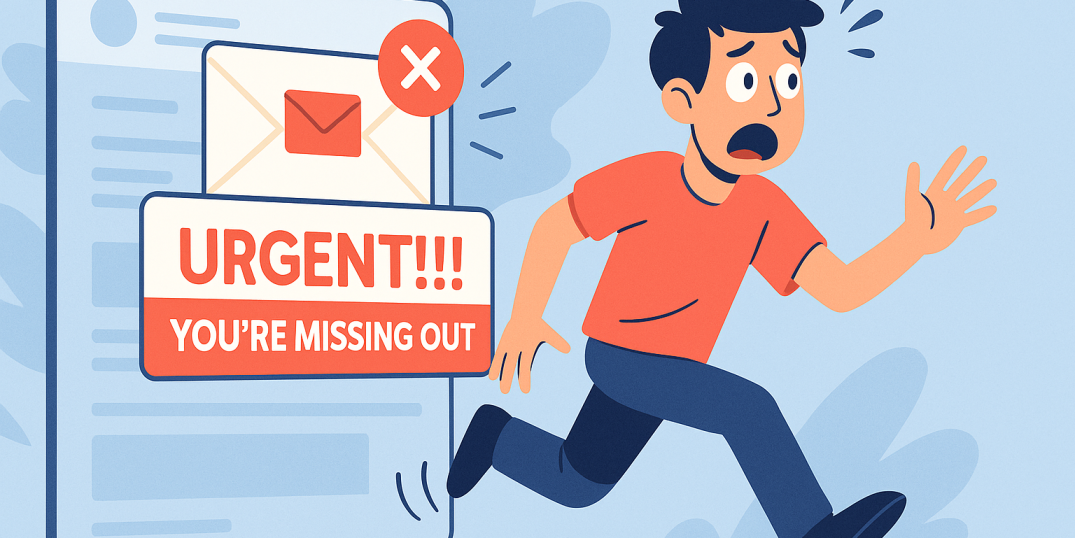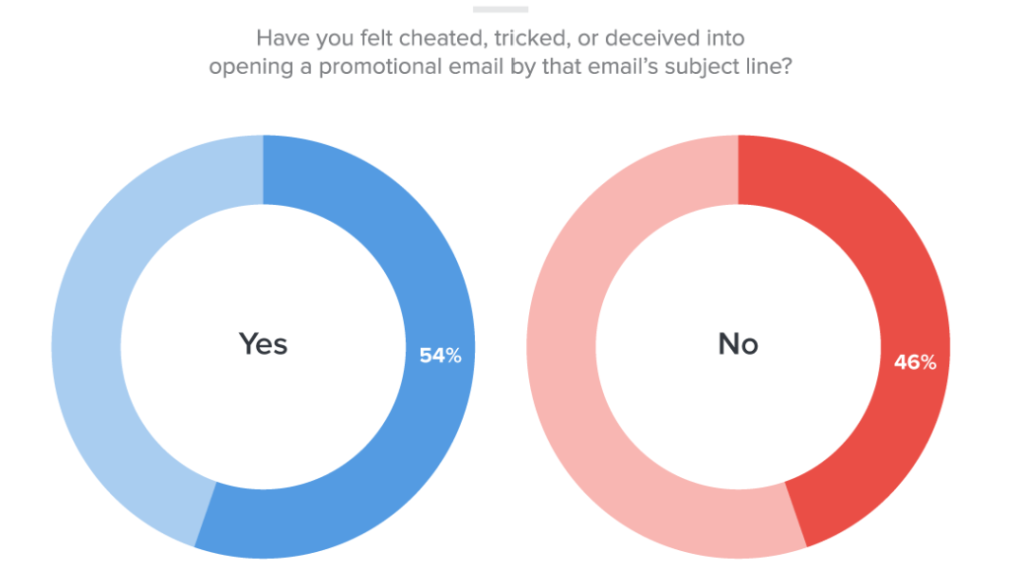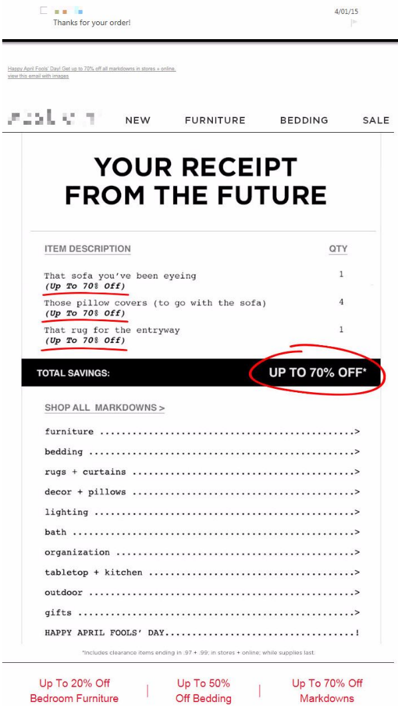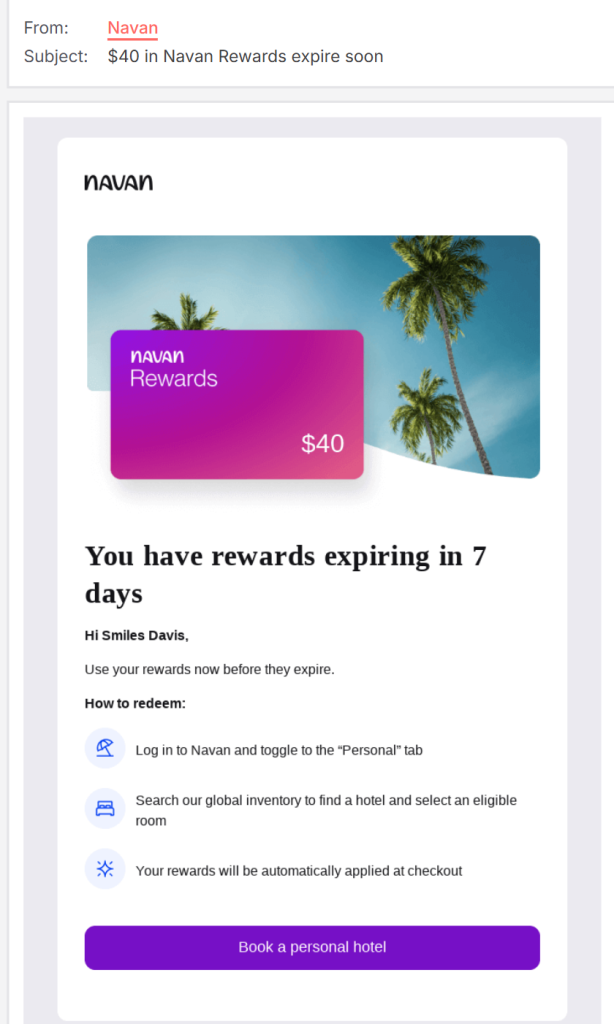- Home
- Friday Column
- Clickbait Subject Lines That K ...

“Find eternal wealth through email marketing”—we could have named this article just like that, and you would have rightfully labeled it “clickbait” in return. This is how most readers feel about headlines in your emails: nobody wants to feel tricked. So, while a flashy subject line might attract readers and make them open your email, the long-term trust in your brand will most likely be damaged.
In this article, we explain to you what a clickbait subject line is and how to walk the line between interesting and engaging subject lines and clickbait. We will give you examples of clickbait subject lines and show you how to avoid falling into the clickbait trap.
What Is Clickbait?
Clickbait is the use of exaggerated or misleading language that is meant to grab attention and initiate a click. If you look at headlines such as “You won’t believe what happened next” or “This trick will change your life forever,” you’ll see that they exploit curiosity, urgency, and emotional triggers in order to get a reaction (a click).
In email marketing, clickbait email subject lines are often built on overhyped promises or too-good-to-be-true offers. The advantage of this type of subject line is that it can truly earn a short-term spike in open rates. Their long-term, and actually more significant, drawback is that they rarely build the kind of lasting engagement that you need.
The problem is not that they don’t work—it’s that they work once. Maybe twice. After that, your readers already know your game, and once they realize that your subject lines don’t deliver on the promise inside, they disengage or even stop trusting you.
The Hidden Dangers of Clickbait
On the surface, clickbait might feel like a harmless way to grab attention. But underneath that quick win are consequences that can destroy the effectiveness of your clickbait marketing in a more profound way. Here’s why relying on clickbait does more harm than good:
⚠️ Erodes trust: Readers feel tricked when your subject line doesn’t match the content of your email. Once that trust is broken, it’s very hard to repair, and your audience becomes less willing to open future emails.
⚠️ Increases unsubscribes and complaints: Misleading subject lines often push people to hit “Unsubscribe” or mark your emails as spam. This leads to churn and leaves you with a smaller and less engaged audience.
⚠️ Hurts deliverability: Spam filters are built to recognize top clickbait phrases and overly promotional wording. The more you rely on them, the greater the chance your emails land in junk folders instead of inboxes.
⚠️ Damages brand reputation: Once your brand gets associated with gimmicks and overpromises, it becomes very difficult to rebuild your credibility. And reputation, once lost, is rarely regained quickly.
With clickbait subject lines, it is important to remember that the short-term spike in opens is never worth these long-term costs. In the end, clickbait hinders your entire relationship with your audience.

Common Clickbait Techniques to Avoid
There’s a certain kind of language that promises the world in just a few words. This language is usually very colorful and hard to ignore—and yet, it’s also the fastest way to drain the patience of your audience. Here are some clickbait techniques that are very obvious and that shall be avoided by all means:
⚠️ False urgency. Subject lines like “Buy this flight in the next five minutes or…” are built on the idea that panic will push someone to open an email. This kind of exaggerated urgency in travel email subject lines can feel alarming rather than persuasive. Urgency only works when it’s tied to something real—like an actual sale ending tonight or limited seats left. When the pressure is fake and exaggerated, readers feel tricked, and worse, they start to assume all of your future emails will be manipulative too.
⚠️ Misleading claims and overpromises. A subject line that hints at a once-in-a-lifetime offer or a guaranteed outcome can be tempting to write. The thing is: your email content has to deliver what the subject line promises. If that does not happen, you are eroding the trust that keeps people opening your emails in the first place.
⚠️ Fake personalization. Pretending someone has an order waiting, or making it look like a personal message when it isn’t, might get the first click. But it also creates a moment of disappointment when the truth comes out, and that disappointment sticks.
⚠️ Finally, there’s the screaming tone of all caps, endless exclamation marks, and spam-trigger words like “FREE!!!” or “Make $$$ fast.” All these tricks are as attention-grabbing as they are annoying. They might serve you in the short term, or rather, the very short term, but not in a way that you aim for. The same goes for the careless use of emojis in subject lines. While a well-placed emoji can add personality or highlight emotion, overloading subject lines with them makes your message risk being flagged as spam.
Best Practices for Ethical & Effective Subject Lines
If clickbait can be compared to a shortcut, then ethical subject lines are about building lasting relationships. They create a pattern of trust that makes readers return again and again.
✅ Being clear and transparent is one of the simplest ways to achieve that. Your subject line should always match the content inside. Surprises are welcome, but deception—never. Every time people open your email and realize that the content matches the promise in the subject line, they will be more willing to open your next email as well.
✅ Use curiosity responsibly. Curiosity is a great thing, but it needs to be contained within certain boundaries. When you hint at something without fully revealing it through curiosity-driven subject lines, it keeps people’s attention alive—but only if the content is truly worth it. This is where the Zeigarnik effect in subject lines can be very handy—use it to spark interest, but don’t manipulate.
✅ Highlight real value and benefits. Instead of overhyping your product or service in a subject line, point to the benefits readers might actually get from it. Whatever it is—insight or a useful tip—a value-driven subject line that matches the content gives people a reason to click without the sour aftertaste that clickbait often leaves behind.
✅ Personalize authentically. As probably everybody already knows, real personalization goes deeper than just adding a first name. It’s about relevance. It can be behavior-based triggers, past interactions, or timely context—anything that makes the subject line feel really special to somebody.
✅ Test subject lines through A/B testing for optimization. No matter how good a subject line looks on paper, it’s your audience who decides if it works. That’s why subject line A/B testing is so important: it shows you what works and what doesn’t and how to adjust your approach without losing your readers’ trust.
✅ Make use of subject line testers. Subject line testers can give you additional feedback before you send your email. They analyze wording, length, and potential spam triggers, helping you refine your subject lines and avoid mistakes that could hurt open rates or deliverability. This becomes even more relevant for subject lines for cold emails, where the margin for error is much smaller and the risk of landing in spam is higher.
Examples of Clickbait: Bad vs. Good Subject Lines
Misleading subject line

Why is it misleading?
This subject line is misleading because it pretends to be something it’s not. A “receipt” suggests the reader has already made a purchase, which can immediately trigger confusion or even frustration. It plays on false personalization—implying an action the recipient never took.
While it might grab attention once, the problem is that the promise doesn’t match the content. Instead of confirming a transaction, the email is actually just a sales promotion. That gap between expectation and reality is exactly what erodes trust over time.

Why is it good?
This one is much stronger. The subject line is clear, transparent, and rooted in genuine value. It uses a subtle urgency tactic—mentioning the rewards will expire in 7 days—but it doesn’t exaggerate or mislead.
The content inside matches the promise: the reader does have rewards, here’s the amount, and here’s how to use them. It’s a perfect example of how formal tactics like urgency and specificity can be applied responsibly. Instead of leaving a sour aftertaste, it gives readers both clarity and a reason to act.
To Sum Up
Most of these clickbait subject line tricks aren’t new. In fact, many have been around since the earliest days of mass marketing. Besides, modern inboxes and their filters are smarter than ever, and so are the people reading them. So, even if a misleading subject line slips past the filters, the gain is short-lived, as readers are quick to spot exaggeration. There’s no sustainability in that.
What is sustainable is integrity—building subject lines that are clear, valuable, and respectful of the reader’s attention. Good open practices create a pattern of trust that compounds over time. When people know that opening your emails consistently rewards them, they don’t need to be tricked into it. They choose to come back because they trust you.



